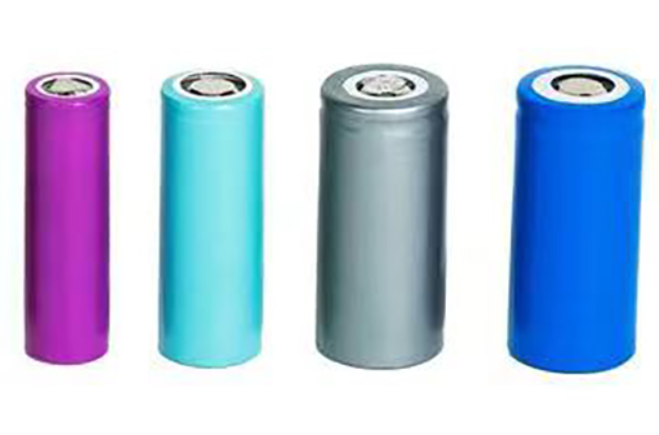Lithium-ion batteries are rechargeable batteries that have dominated the battery field since they were proposed in the 1970s by Stanley Whittingham, a chemist at ExxonMobil. Lithium-ion batteries, with their high energy density, no memory effect and low self-discharge, are widely used in many fields such as power tools, medical equipment, hybrid and pure electric vehicles. There are many types of lithium-ion batteries, and different types can be obtained according to different classification standards. According to the internal material, lithium-ion batteries can be divided into lithium metal batteries and lithium-ion batteries, the former usually uses manganese dioxide as a positive electrode material, lithium metal or its alloy metal as a negative electrode material, while the latter uses lithium alloy metal oxide as a positive electrode material and graphite as a negative electrode material. According to the classification of positive and negative electrode materials, lithium-ion batteries include lithium iron phosphate batteries, lithium cobalt acid batteries and lithium manganese acid batteries. Lithium iron phosphate battery is favored because of its good electrochemical performance and low resistance; Lithium-ion cobaltate batteries have become a popular choice for mobile phones, laptops and other electronic devices because of their high specific energy; Lithium-ion manganate batteries, with their high current discharge capacity and moderate heat accumulation characteristics, are widely used in power tools, medical equipment and other fields.
lithium ion battery cathode material determines the energy density and performance characteristics of battery, so according to the classification is the main classification of lithium ion battery anode material. Lithium-ion batteries currently on the market are mainly divided into the following types:
1. Lithium cobalt oxide battery (LiCoO2) : lithium-ion battery with lithium cobalt oxide as the positive electrode material, with high energy density, high voltage platform and other advantages, often used in mobile phones, laptops and other portable electronic products.
2. Lithium iron phosphate battery (LiFePO4) : lithium ion battery with lithium iron phosphate as the positive electrode material, with high safety, long life, low cost and other advantages, often used in electric vehicles, energy storage power stations and other fields. 3. Terpolymer lithium ion battery (NCM/NCA) : lithium ion battery with nickel cobalt manganese or nickel cobalt aluminum as positive electrode material, with high energy density, good charge and discharge performance and other characteristics, is widely used in electric vehicles, mobile devices and other fields.
according to different application scenarios and USES, lithium ion batteries are divided into various types. Such as power lithium batteries, consumer lithium batteries, etc. 1. Power lithium battery: mainly used in electric vehicles, hybrid vehicles, power tools and other fields, requiring batteries with high energy density, high power density, long life and other characteristics. 2. Consumer lithium batteries: mainly used in portable electronic products, such as mobile phones, laptops, digital cameras, etc., requiring batteries with light, safe, environmental protection and other characteristics.
in addition to the above two kinds of classification, and classified by manufacturing lithium ion battery, such as winding type and fold type battery.
In addition, there are new battery types such as all-solid-state lithium-ion batteries. All-solid lithium-ion batteries use solid electrolytes to replace traditional liquid electrolytes, which has higher safety and energy density.
Please note that due to space constraints, this article cannot elaborate on the detailed principles and characteristics of each type of lithium-ion battery. For more information, please consult the relevant literature or consult a professional. At the same time, due to the continuous development of lithium-ion battery technology, the content of this article is for reference only.

In addition, according to the appearance shape, lithium-ion batteries can be divided into cylindrical batteries, square batteries and button batteries; According to the electrolyte state, it can be divided into liquid lithium battery, polymer battery and all-solid state battery. According to the type of packaging, it can be divided into steel shell batteries, aluminum shell batteries, plastic shell batteries and flexible packaging batteries. The composition of lithium-ion batteries is also quite complex, generally including positive, negative, diaphragm, electrolyte, positive temperature control terminals, positive and negative leads, center terminals, insulation materials, safety valves and metal shells. Together, these components determine the electrochemical performance of lithium-ion batteries. It is worth mentioning that with the progress of science and technology, the research and development field of lithium-ion batteries is also constantly expanding, including research on life extension, energy density improvement, safety enhancement, cost reduction and faster charging speed. At the same time, the safety of lithium-ion batteries has also received extensive attention and research to ensure that it will not cause harm to the environment and users during use.
In general, there are various types of lithium-ion batteries with different performance, which can meet the needs of different fields. However, with the wide and deep application, the performance and safety requirements of lithium-ion batteries are becoming higher and higher, which has also prompted the continuous innovation and development of lithium-ion battery technology.